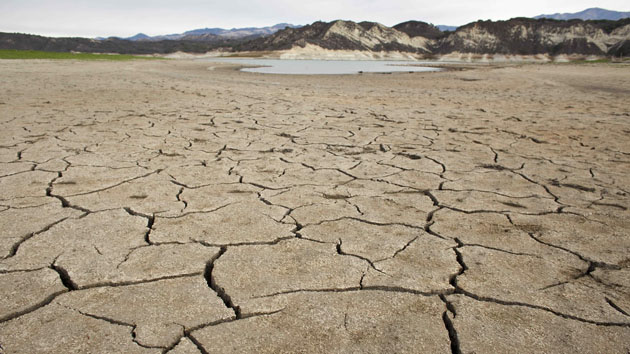California Drought: A Thirsty State
April 27, 2015
California is now in serious trouble. The people are now limited in their water use and consumption and the state of California is drying up–leaving many residents worried that water may become even more scarce. It is estimated that water supplies will only last for one year. What will California do without its most precious source of life? With so many people living in the state, precautions must be taken in order to monitor the use of water. The State Water Resources Control Board has been told to monitor the amount of water being released to the public. Unfortunately, this leads to negatively affecting farmers which, in short, means no water, no jobs, or food.
Without water for food, prices will begin to skyrocket, ultimately affecting our wallets. As if the economy wasn’t bad enough for us, farmers are now forced to grow other crops that work better under the circumstances. They must adapt to the way things are now including changing the structural way of how crops will be placed. The governor, Jerry Brown, is said to have backed cutting the length of showers and cutting water for the lawns of homes. The Republican assembly members from Orange County responded to the governor believing that the solution is not to cut back water, but to stop sending excess water to the Pacific Ocean and start sending the excess back into our cities. Whether water officials are going to start sending water to California cities is unknown. Brown has also decided to reduce the use of water by Californians by 25 percent. Unfortunately, Brown had asked for voluntary cutbacks but was only given a 9 percent statewide reduction.
While other solutions have been recommended such as the aforementioned limited shower time and cutting back farm water use, a new solution has surfaced suggested that raising prices in water will help economic matters. A well-known actor, William Shatner, is also involved in creating a solution to solve our drought epidemic. He has decided to raise money to create a pipeline from Seattle to California. He suggests to build it along the Highway 5, and he believes this will solve the problem. Paul Faulds, manager for Seattle Public Utilities, does not agree with sharing its city’s water resources. Faulds says Seattle has water for his city but is not under obligation to send California any water. He believes they use their water wisely and know how to manage their water. Unfortunately, this doesn’t solve our problem and leaves us wondering how long California will last under such a dire state of affairs. Its clear to say that California won’t survive for long if people don’t contribute in making the water last. Without the people’s help, the state may cease to exist as we know it.



